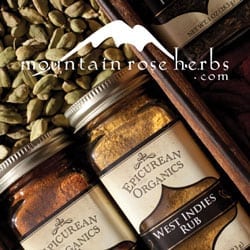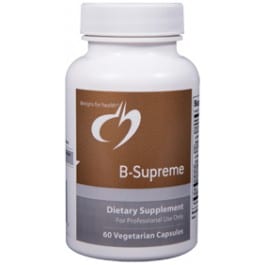Do you suffer with mold allergy or think you may have underlying yeast overgrowth issues?
Many people with Hashimoto’s do. Some types of mold or yeast and fungi affect an estimated 50% or more of the population and these can cause disease. Once established, these nasty infections are extremely challenging to get rid of and it can take a long time.
Mold or an overgrowth of yeast affects digestion and the absorption of essential vitamins and minerals. Over time, the result may be chronic progressive disease such as cardiovascular ailments, arthritis, gout, asthma, allergies, sinusitis, gastritis, tuberculosis, cancer, and more.
The most common symptoms include sneezing, wheezing, joint pain, muscle aches, headaches, fatigue, depression, anxiety, irritability, confusion, rashes, itching, poor memory, numbness, digestive ailments, abdominal pain, bloating, gas, constipation, hives, rashes, vaginal yeast infections, urinary frequency, attacks of anxiety and shaking when hungry. The symptoms can also be flu-like. Mold can cause fungal diseases of the skin, nails, ears and lungs.
You may experience a few of these symptoms or many if related to a mold or yeast infection (Candidiasis). This can be caused by a poor diet (high in sugar and carbohydrates) and high stress levels, which keep feeding yeast overgrowth. Mold can grow on bread or cheese, overripe fruit, vegetables, grains, and other foods and get into food by absorbing minerals, sugars, and water or from decaying matter on which they live.
Candida albicans is actually a harmless yeast that naturally lives in every one’s GI tract, mucous membranes and on the skin. It lives there in a symbiotic world in a healthy person’s body but when your body’s eco-system becomes unbalanced, Candida overgrowth can occur, thus allowing it to attack any organ or system in your body, primarily targeting the nerves and muscles, but can also attack any body tissue or organ depending on your body’s predisposition. Yeast (a/k/a “yeastie beasties”) literally have claw-like structures used to embed themselves by latching onto your intestinal lining and other mucous membranes making them difficult to get rid of once they’ve populated in high numbers.
Dietary changes can help reduce yeast as well as can a number of herbs and supplements and can promote a healthy digestive tract. Studies have shown that herbs such as garlic, barberry, oregano, Oregon grape and goldenseal, as well as the fatty caprylic acid, can inhibit the growth of yeast. I use Mountain Rose Herbs for their quality.

In the event there is evidence or you strongly suspect mold allergy, a four-day rotation diet is wise to minimize contact with allergens.
This is a diet where foods are eaten once every four days. Foods that may contain mold are peanuts, beef, tomatoes, citrus fruits, chocolate, soy, MSG, sulfites and aspartame (NutraSweet/Equal, and similar poison).
This diet restricts foods that contain yeast and gluten, brown rice, popcorn, corn products, honey, smoked, dried, pickled and cured foods such as buttermilk and sour cream (live cultured yogurt helps to replenish good intestinal bacteria), no aged cheese of any kind – (some cheeses are okay if milk is not a problem, e.g. cottage cheese, mozzarella, provolone, ricotta and farmer’s cheese), however I strongly recommend eliminating dairy.
- Avoid eggs, beef, corn, and potatoes, mushrooms, nuts or nut butters (except almonds and almond butter), fruit juices, (frozen fruit is okay), dried or candied fruit and coffee, black tea, caffeine, cider and homemade root bear (commercial root beer is fine).
- No canned tomatoes, unless homemade. Avoid citric acid which is a very common food additive; not derived from citrus fruit.
- Eat leftovers within 24 hours. Multi-B Vitamins: many contain either yeast or mold (rice hulls are moldy). B- Supreme is certified to not contain any mold or yeast. Always check with the manufacturer of any Multi-B Vitamin.
- Organic foods, although much better for the body, can be affected by toxic mold due to the lack of chemicals so they tend to mold more quickly as they lack artificial preservatives.
- Tap water contains mold. Drink bottled water packaged in glass (not plastic) bottles. Even better, try to drink distilled water or install a reverse osmosis system in your kitchen sink. We used Culligan for our system and it’s very affordable. Reverse osmosis water retains the good bacteria in the digestive tract.
- To fight Candida it is best to reduce all foods high in carbohydrate; sugars and starches in order to starve the Candida yeast embedded in the lining of your digestive tract and mucous membranes. Wheat does not directly feed yeast but since it is a common food sensitivity these days for many people it is a good idea to eliminate it.
- Fermented foods are controversial if you have a significant overgrowth of yeast or a mold allergy so be mindful of your intake here. Signs your favorite Kombucha or kraut is causing a problem? A feeling of morning drunkenness if not immediately after consumption or bloating and headaches are red flags that should prompt you to consider eliminating fermented foods as a test. I personally experienced the “morning hang-over” feeling from having daily a tall glass of Kombucha AND kraut on top of my salad with dinner. I’ve backed off to every other day and I don’t do both on the same day. All is well now.
The causes of Candida overgrowth can be related to…
Antibiotics, steroids such as cortisone and prednisone, birth-control pills and synthetic estrogen replacement therapy, poor diet, chemotherapy, radiation, stress, and over-use of alcohol. Avoid all chemical foods and drugs. Strong antibiotics, steroids, corticosteroids and tobacco must be avoided.
This diet is necessary for the first critical weeks as this is the only way to deprive yeast of nutrients and kill them off. Symptoms are often worsening in a damp and/or moldy environment. If you can afford it, get your home (especially your bedroom) inspected for mold.
The Candida cleansing diet should include the following foods, in the correct proportions; 65% high fiber, low starch vegetables such as broccoli, celery, radish and asparagus. Consume plenty of fresh steamed veggies especially onions, garlic, ginger root, cabbage, carrots, peas, sweet potato, cauliflower and yams. Onions and garlic are very good anti-fungals. All root vegetables should be peeled. Remember, those of us with thyroid disease (or those interested in maintaining a healthy thyroid) should not eat veggies in the Brassica family raw…they should always be lightly cooked or steamed because vegetables from this plant genus are known to be goitrogenic. In other words, a goitrogen is a thyroid antagonist found in food and inhibits thyroid function.
- 20% high protein foods such as antibiotic-free fish, fowl, nuts, seeds and eggs.
- Spray all nuts and seeds with a solution of 15-30 drops GSE (grapeseed extract) in 2-cups water to kill any aflatoxins mold or fungus that may be present. All nuts should be roasted unless you purchased them already in their shell and hulled them yourself. During the weekly clinical rounds tele-call classes I participate in I often hear naturopaths and functional medicine doctors hypothesizing about peanut allergies in children. Many believe that since the peanut is actually not a nut, but a legume, that it is the mold itself children are allergic to, and not necessarily the peanut per se. I find this to be very interesting because peanuts are deemed one of the most inflammatory foods out there – so is the problem really the peanut, or is it the mold? I say mold is the culprit.
- 10% complex carbohydrates such as brown rice, beans, millet, amaranth, quinoa and buckwheat.
- 5% fruit; papaya, pineapple, grapefruit, peaches, pears, and all types of berries. Other acceptable foods are seafood and sea vegetables, olive oil, white rice, coconut aminos, white rice cakes, herb teas and unsweetened cranberry juice.
This type of diet also reduces the unpleasant effects of headaches, nausea and fatigue, known as the “herxhiemer reaction,” which is caused by the release of toxins when pathogenic microbes “die-off.” So it is best to start low and go slow with healing.



